Click here for English
SISTEME ȘI SERVCII
Anastasia Eggers & Ottonie Von Roeder
„Cow&Co este ideea unei turme de vaci ce dorește să aibă propria afacere. Vacile se transformă pe ele însele în mașini de producție independente. Gazul metan colectat din stomacurile lor este folosit pentru a alimenta un robot de muls. Animalele sunt libere să se plimbe în spațiile verzi ale orașului și folosesc un serviciu digital pentru a lua legătura cu posibilii clienți. Acest serviciu le permite oamenilor să selecteze online o vacă și să ia lapte proaspăt de la ea. Animalele sunt echipate cu un senzor ce le monitorizează condiția și care colectează informația atât pentru întreținerea tehnologiei, cât și pentru bunăstarea animalului. Cow&Co pune sub semnul întrebării relația de producție-consum dintre oameni și vaci și propune un model de afaceri alternativ.”- Citește aici declarația juriului
„Este neobișnuit: să plătești lunar o sumă pentru a folosi o bicicletă, dar fără a o cumpăra. Dar fondatorii serviciului Swapfiets au luat exemplul programului Netflix și consideră că oamenii sunt deschiși unui sistem de abonare la un astfel de serviciu de biciclete. Începând de la 12 euro pe lună, există chiar și posibilitatea de a chema un mecanic, în caz de nevoie. Cu toate că există posibilitatea de a alege dintr-o varietate de culori, toate bicicletele au cauciucul frontal de culoare albastră. Unul dintre serviciile adiționale permite chiar alegerea unui cadru de o culoare diferită și schimbarea acestuia de către angajații Swapfiets. Swapfiets promite să repare sau să înlocuiască orice bicicletă în maximum 12 ore. Ideea este inovatoare și răspunde în mod perfect creșterii cererii de noi servicii.” – Citeste aici declarația juriului
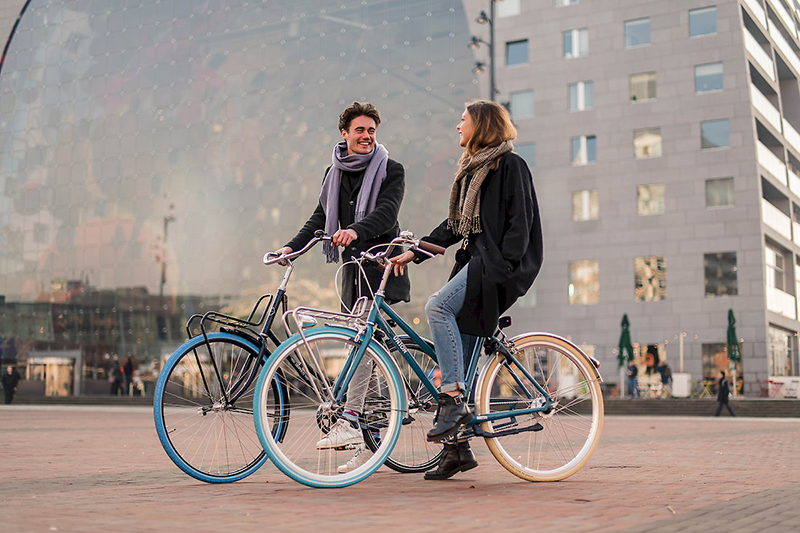
„VIIA este o colaborare între Royal HaskoningDHV şi compania VelkerWessels Visser & Smit Bouw. A fost creată pentru a asigura clădirile publice în zona seismică din Groningen prin inspecţii, analize şi colectarea de date. Până de curând, acest lucru era realizat manual, printr-un proces intensiv ce implică multe resurse şi trebuie repetat pentru fiecare clădire în parte. În numele Centrului Veilig Wonen, Freshheads si VIIA au realizat o unealtă digitală: experţii introduc date de măsuratori în program, informaţie tradusă ulterior într-un model 3D. Inginerii utilizează modelul pentru a realiza o analiză seismică şi pentru a identifica ce părţi ale clădirii au nevoie de consolidare şi în ce măsură. Douăzeci de organizaţii lucrează în prezent cu această nouă unealtă.” – Citeste aici comentariul juriului
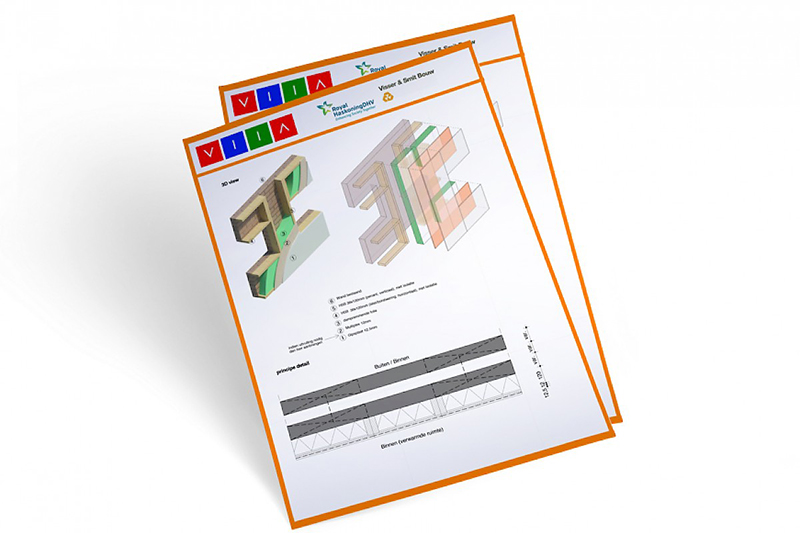
CEL MAI BUN CLIENT
Museum Catharijneconvent x Fabrique
„”Oare de ce ignoră adesea olandezii bisericiile din propria lor țară, dar vizitează fiecare loc de închinare atunci când sunt în vacanțe?” Aceasta este întrebarea care a dat startul ideii de a face bisericile olandeze mai atractive; nu neapărat pentru cei ce deja merg în mod regulat la biserică, ci pentru oamenii interesați de istoria bogată și de poveștile bisericilor. Anul trecut, Muzeul Mănăstirii Catarijne și agenția de design Fabrique au colaborat în elaborarea conceptului, a site-ului web și a unei identități grafice pentru „Cel mai mare muzeu din Olanda”. Un tur audio împreună cu informații adiționale furnizează povești despre comorile secrete ale treisprezece biserici remarcabile și sinagogi. Bisericile olandeze conțin o colecție unică, iar acum formează împreună cel mai mare muzeu din Olanda.” – Citește aici declarația juriului
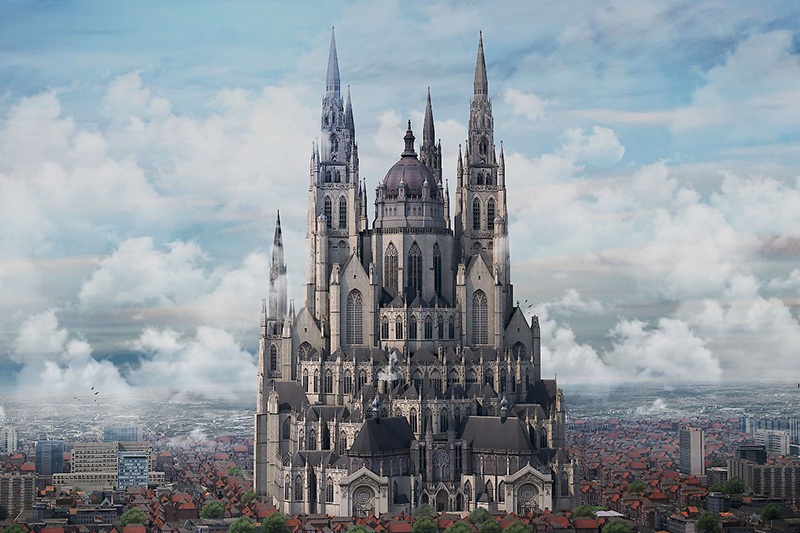
Royal Delft x Flex/Design x Twinkls/Augmented Reality
„Fiecare vază Royal Delft pictată manual este unică și reprezintă o piesă tradițională de Albastru de Delft. Chiar și atunci când elemente decorative specifice sunt transpuse pe alte obiecte, reale sau virtuale, identitatea „blueware” este de netăgăduit. Acest proiect este o fuziune inteligentă între un meșteșug vechi de secole și tehnologie de realitate digitală augmentată. Augmented Blueware este rezultatul unei colaborări strânse. Royal Delft a dorit să lanseze o gamă de veselă extraordinară. Pentru a crea un concept capabil într-o piață deja suprasaturată, FLEX/design a ales să creeze o colecție aparte, în care fiecare set individual de veselă este bazat pe designul unic al unei vaze Delf Blue pictate manual. Acest proiect inovator a fost posibil datorită expertizei tehnologice a celor de la TWNKLS/Augmented Reality.”- Citește aici declarația juriului
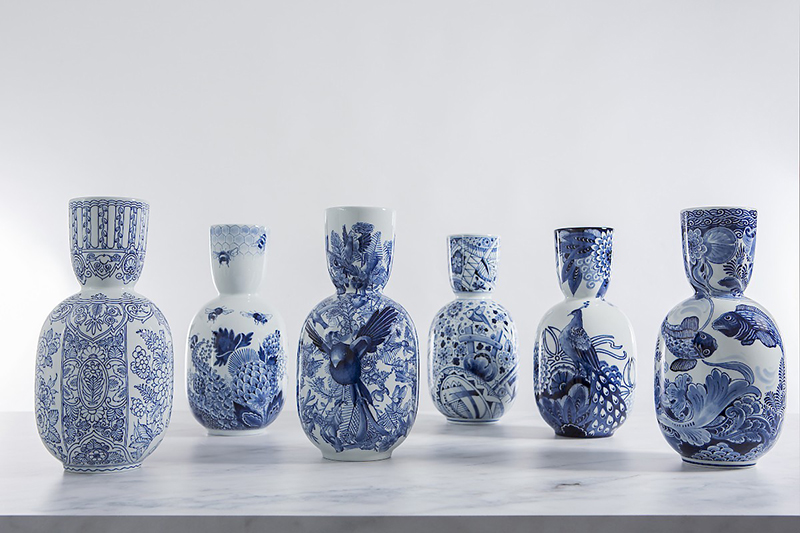
„Social Label se prezintă ca un laborator ce folosește puterea designului și a comunicării pentru a crea noi abordări în piața forței de muncă, educație și participare. În acest sens, ei reprezintă mai mult forța catalizatoare în realizarea de modele ce ajută oamenii din ateliere să avanseze. Fondatoarele Petra Janssen (Studio Boot) și Simone Kramer (C-mone) creează activități de muncă adaptate abilităților și nevoilor membrilor atelierelor și realizează creații pline de înțeles, astfel încât oamenii ce se găsesc la marginea societății să se poată implica în piața forței de muncă. Social Label este în permanență în căutare de designeri ce pot realiza produse în beneficul membrilor atelierelor. Doisprezece designeri coordonatori lucrează în prezent cu Social Label. Printre aceștia se regăsesc Piet Hein Eek, Kiki Van Eijk, Dick Van Hoff, Edwin Vollebergh, Borre Akkersdijk și Roderick Vos.”- Citește aici declarația juriului
HABITAT
„Slim Fit este o casă de dimensiuni mici cu un design grandios. Această minireședință ce măsoară doar 50 m², divizați în trei niveluri, este creată pentru densificare urbană. Datorită amprentei sale reduse, construcția ocupă un spațiu mai mic decât două locuri de parcare. Acest lucru o face ideală pentru utilizarea în orașe și în special în zonele centrale, dar și în zone mai spațioase, precum cartiere aflate în etapa post-război. Designul compact realizat de Ana Rocha Architecture poate fi construit independent sau în serie. Abordarea este concepută pentru grupul în creștere de oameni singuri ce doresc să trăiască în mod compact, confortabil, durabil, cu caracter și mai presus de toate central în zone urbane.”- Citește aici declarația juriului
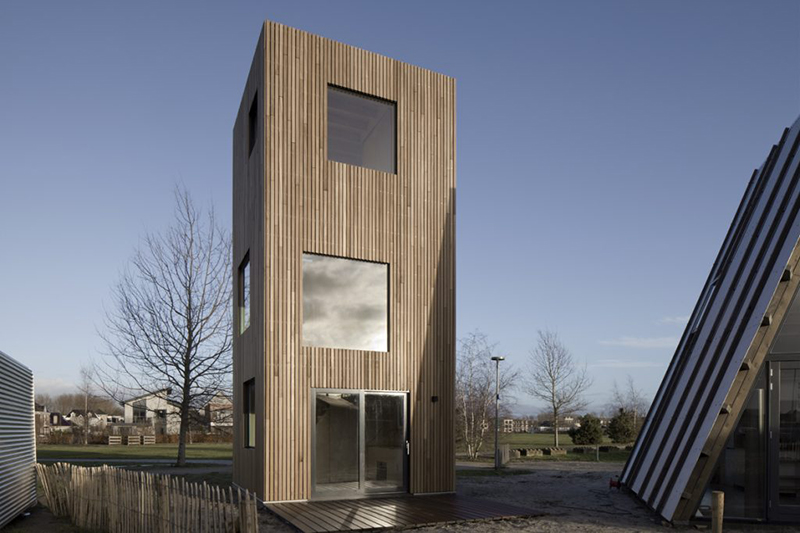
„Pavilionul Oamenilor, simbolul primului Eveniment Mondial de Design (WDE), un design realizat de Overtreders W și biroul SLA, a fost prezentat în timpul Săptămânii Designului Olandez din 2017 în zona centrală din Strijp-S. Designerii au construit pavilionul folosind materiale împrumutate și refolosite, rezultând o fațadă colorată de plastic reciclat și un schelet de lemn din elemente împrumutate: o clădire cu o amprentă ecologică aproape nonexistentă. La urma urmei, materiile prime nu au fost pierdute iremediabil în timpul construcției, toate materialele folosite fiind returnate după aceea proprietarilor”- Citește aici declarația juriului
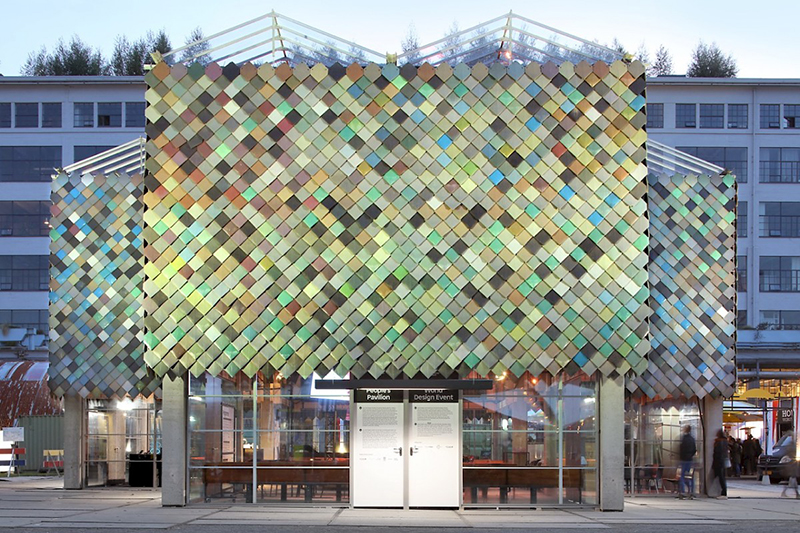
„Podul Zaligebrug realizat de NEXT Architects este un răspuns funcțional la întrebările și cererile născute în urma redezvoltării malului râului datorită schimbărilor climatice. Podul de 200 de metri din Lent (Nijmegen) face legătura dintre noua insulă Veur-Lent și malul nordic al râului Waal și se întinde peste valea artificială creată pentru a acorda spațiu râului în perioada de flux. Prin intermediul designului său, podul oferă experiența fluctuației nivelului de apă în relație cu podul și elementele înconjurătoare. Podul curbat ușor se contopește cu structura cărării ce trece prin parcul râului.”- Citește aici declarația juriului
TÂNĂR DESIGNER
„În decursul ediției din 2015 a Săptămânii Modei din Amsterdam, Lisa Konno a prezentat colecția de debut „Pentru Muncitori”: „o declarație împotriva atelierelor de lucrători plătiți mult sub prețul pieței” menită să aducă în atenția publicului condițiile din industria orientată pe profit a modei. Anul următor, împreună cu marca Afriek, a vizitat Rwanda pentru a crea o colecție de modă feminină folosind forța de muncă locală. Inspirația ultimei sale colecții și vedeta acesteia este chiar tatăl ei, de origine japoneză, Nobuaki Konno, care a emigrat în Olanda în anul 1977. Acest proiect este răspunsul ei artistic și comentariul ironic la dezbaterea despre problema integrării: o sărbătoare vizuală a neînțelegerilor culturale și clișeelor turistice, în care rolul principal de muză și inspirație este jucat de către tatăl ei Nobu.”- Citește aici declarația juriului
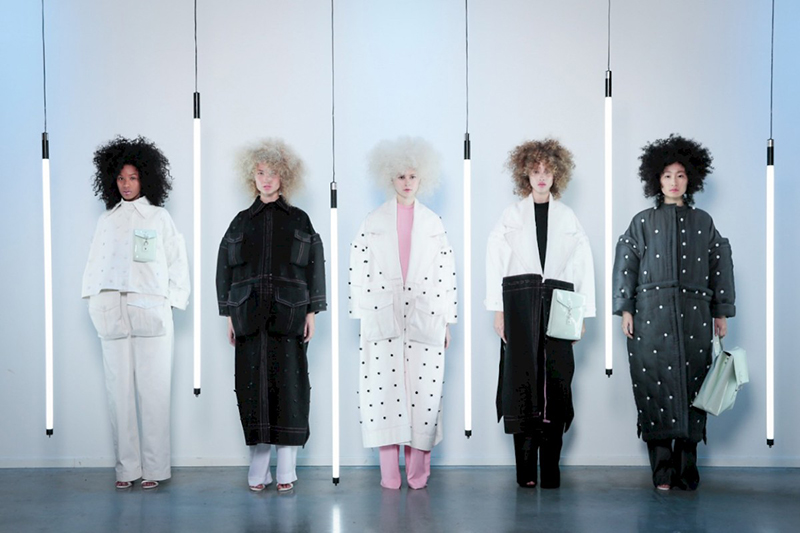
„Manon van Hoeckel creează întâlniri. Van Hoeckel este un designer ce realizează unelte menite să încurajeze comunicarea între persoane ce nu se cunosc. A folosit același principiu în „spălătoria” din expoziția „Schimbă Sistemul” din Boijmans Van Beuningen. Spălătoria crea întreruperi și punea sub semnul întrebării rolul muzeului, aducând împreună diverse grupuri țintă. În „Ambasata de nicăieri” – o ambasadă mobilă pentru refugiați, azilanți și imigranți fără acte – Van Hoeckel le conferă refugiaților rolul de ambasadori, prezentându-i într-o nouă lumină. Prin proiectul „Făcând Bani” ea investighează cum refugiații fără acte pot sau ar trebui să fie utili societății.”-Citește aici declarația juriului
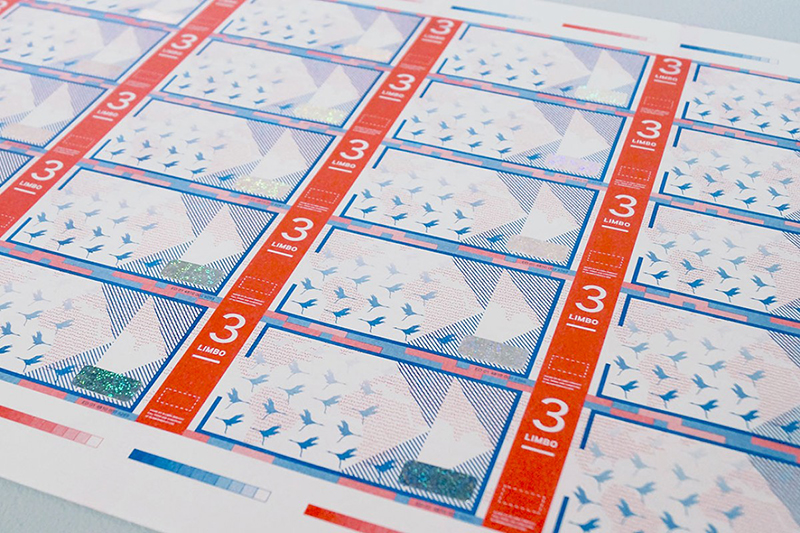
„Olivier van Herpt lucrează la interfața meșteșugurilor tradiționale și a designul industrial contemporan. Accentul este pus pe ceea ce separă aceste două domenii: utilajul. Colecția de absolvire a lui Van Herpt este o colecție neobișnuită de vase de ceramică, castroane și vaze realizate cu o imprimantă 3D avansată tehnologic realizată de el însuși. În prezent lucrează la o nouă imprimantă 3D, cu care va putea realiza și forme organice. El caută de asemenea să și democratizeze procesul de producție și să reducă distanța dintre designer și utilizator, făcând accesibile tuturor tehnologiile create de el.”- Citește aici declarația juriului
Partea intai a Premiilor Designului Olandez
Premiile Designului Olandez 2017 / 2016
SERVICE & SYSTEMS
Anastasia Eggers & Ottonie Von Roeder
„Cow&Co is a concept introduced by a herd of cows that want to start their own business. The cows turn themselves into self-sufficient milk production machines. Methane gas collected from their stomach is used to fuel a milking robot. The animals roam independently in the green spaces of a city and use an online service to connect with their customers. This service allows people to select a cow and collect fresh milk from it. The animals are equipped with a welfare sensor so they can monitor quality, and can also use the data for technical, veterinary and nutrition maintenance. Cow&Co questions the production-consumption relationship between people and cows and proposes an alternative business model.” – Read here the comment of the Committee
„It’s unusual: paying a fixed monthly fee to use a bicycle without actually buying it. But the founders of Swapfiets think that, thanks to Netflix, people are ready to join a bicycle subscription scheme: you pay for being mobile. From as little as 12 euros a month, you can even call a mechanic when the bike tyres need pumping. You can choose from a variety of frame colours, but the bikes always come with a blue front tyre. If you pay extra, you can even swap your frame for a different colour – and ask the swap crew to do it. Swapfiets promises to repair or exchange every bike within twelve hours. It’s an innovative idea that perfectly responds to the growing demand for service concepts.” – Read here the comment of the Committee

„VIIA is a joint venture between Royal HaskoningDHV and VolkerWessels company Visser & Smit Bouw and was established to secure public buildings in the earthquake area of Groningen by inspecting, analysing and taking the required reinforcement measures. Until recently, this was carried out manually; a labour-intensive process involving a great deal of expert knowledge, which is repeated for each at-risk building. On behalf of Centrum Veilig Wonen, Freshheads and VIIA developed a digital tool: experts enter measurement data into the programme, which then translates it into a 3D model. Engineers use the model to arrive at a seismic analysis, and identify which parts of the building need reinforcing, and to what extent. Twenty organisations are now working with the new tool.” – Read here the comment of the Committee

BEST CLIENT
Museum Catharijneconvent x Fabrique
„Why do Dutch people often ignore the churches in their own country, yet visit every historic place of worship while on holiday? This was the question that prompted the idea of making Dutch churches more inviting to day-trippers; not necessarily regular churchgoers, but people interested in the rich history and story behind the church. Last year, Museum Catharijneconvent and design agency Fabrique teamed up to develop the concept, website and new graphic identity for ‘The Greatest Museum in the Netherlands’. An audio tour and additional information shares stories about the hidden church treasures of thirteen remarkable churches and synagogues. Dutch churches contain a unique collection and now, together, form the largest museum in the Netherlands – also literally, in square metres, art treasures and visitors.” – Read here the comment of the Committee

Royal Delft x Flex/Design x Twinkls/Augmented Reality
„Every hand-painted Royal Delft vase is an unmistakable, one of a kind, traditional piece of Delft Blue. Even when the specific decoration is translated into other objects, real or virtual, the distinctive ‘blueware’ identity is undeniably in evidence. This project is a clever fusion of centuries-old craftsmanship and advanced digital augmented reality technology. Augmented Blueware is the product of close collaboration. Royal Delft wanted to launch a range of extraordinary tableware on the consumer market. To create a concept that would stand out in an already overcrowded marketplace, FLEX / design came up with a smart concept: an exclusive range of Blueware in which each individual dinner service is based on a unique, hand-painted Delft Blue vase. This innovative project was made possible thanks to the technical expertise of TWNKLS / Augmented Reality, a leader in the field of computer vision.” – Read here the comment of the Committee

„Social Label describes itself as a laboratory that uses the power of design and communication to create new approaches to labour, learning and participating. In this sense, they are not principals as much as catalysts of designs that help people in the workshop to get ahead. Founders Petra Janssen (Studio Boot) and Simone Kramer (C-mone) design work activities that are tailored to the abilities and needs of workshop members, and create meaningful design so that people on the fringes of society can get involved in the labour market, and take pride in the attractive products they make. Social Label is always on the lookout for designers who can design products aimed at benefiting the workshop participants. Twelve leading designers are currently working with Social Label, including Piet Hein Eek, Kiki Van Eijk, Dick Van Hoff, Edwin Vollebergh, Borre Akkersdijk and Roderick Vos.” – Read here the comment of the Committee
HABITAT
„Slim Fit is a tiny house with grand designs. The micro-home, measuring a mere fifty square meters distributed over three floors, is designed for urban densification. Slim Fit’s modest footprint means it occupies less space than two parking bays, making it ideal for use in inner-city contexts, as well as densification in more spacious (post-war) neighbourhoods. Ana Rocha Architecture’s compact design can be built as a freestanding, or connected, dwelling. The concept is designed for the growing group of working singles who want to live compactly, comfortably, sustainably, characterfully and, above all, centrally in urban contexts.” – Read here the comment of the Committee

„The icon of the first World Design Event (WDE), the People’s Pavilion, a design by Overtreders W and bureau SLA, was presented during Dutch Design Week 2017 in the middle of Strijp-S. The designers built the pavilion using loaned and repurposed materials, resulting in a colourful façade of recycled plastic and a wooden skeleton of borrowed components: a building with an ecological footprint of almost zero. After all, raw materials were not irretrievably lost during construction; all materials used were returned undamaged to the owners afterwards.” – Read here the comment of the Committee

„The Zaligebrug, designed by NEXT architects, is primarily a functional answer to the questions and demands that arose from the redevelopment of the river landscape as a result of climate change. The 200-meter-long bridge at Lent (Nijmegen) connects the new island of Veur-Lent with the northern bank of the Waal and stretches over the lateral gulley that was created to give the river space at high tide. With its playful design, the bridge allows people to see and experience fluctuating water levels in relation to the bridge and the immediate surroundings. The gently curving bridge blends with the path structure running through the river park.” – Read here the comment of the Committee
YOUNG DESIGNER
„At the 2015 edition of FashionWeek Amsterdam, Lisa Konno presented her debut collection ‘For the Workers’: an ‘anti-sweatshop statement’, to raise awareness of the conditions in the fast fashion industry. A year later she travelled to Rwanda with the clothing brand Afriek to create a women’s clothing collection with the help of local garment-makers. The inspiration for her latest collection and the star of the show is her Japanese father, Nobuaki Konno, who emigrated to the Netherlands in 1977. This project is her artistic response to, and ironic comment on, the integration debate: a visual celebration of cultural misunderstandings and tourist clichés, in which father Nobu plays the main role as muse and source of inspiration.” – Read here the comment of the Committee

„Manon van Hoeckel designs encounters. As a social designer, Van Hoeckel develops tools that encourage strangers to chat to each other. She did precisely the same in her ‘wassalon’, or launderette, which was part of the ‘Change the System’ exhibition in Boijmans Van Beuningen. The laundry was disruptive, questioned the role of the museum and brought together different target groups. In ‘Limbo Embassy’ – a travelling embassy for refugees, asylum seekers and undocumented migrants – Van Hoeckel gives refugees the role of ambassadors, thus showing the refugee issue in an entirely new light. With her ‘Making Money’ project, she investigates how undocumented refugees can or should contribute to society.” – Read here the comment of the Committee

„Olivier van Herpt works on the interface of traditional crafts and contemporary industrial design, and focuses on what separates these two domains: the machine. Van Herpt graduated with an unusual collection of ceramic bowls, bowls and vases, made with an advanced 3D printer that he had developed himself over a two-year period. He is presently working on a new 3D printer which will enable him to create organic forms, although he will probably explore other techniques and materials too, with equal dedication. He also seeks to democratise the production process and to reduce the distance between designer and user by making his self-developed technologies available to everyone.” – Read here the comment of the Committee
Part One of Dutch Design Awards
Dutch Design Awards 2017 / 2016
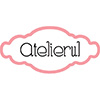


NO COMMENT